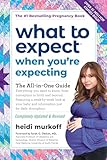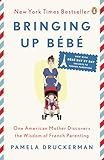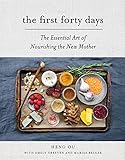When I found out I was pregnant, the first person I told, besides my husband, was my friend’s mother, Claire, who is a doula. The word “doula” comes from the Greek word for “slave” and refers to a birthing professional who is devoted to the mother—or to both parents,— and ensuring her holistic well-being during the antenatal months, through labor, and into the “fourth trimester.”
 Claire insisted on sending me a book. It arrived in the mail a few days later: Birth with Confidence by Rhea Dempsey, another Melbourne-based doula. The subtitle interested me: Savvy Choices for Normal Birth.
Claire insisted on sending me a book. It arrived in the mail a few days later: Birth with Confidence by Rhea Dempsey, another Melbourne-based doula. The subtitle interested me: Savvy Choices for Normal Birth.
A “savvy woman,” the book purported, understood that there was “power in women’s bodies,” and that it was necessary to “be on guard, defensive and second-guessing all the time about what the agendas are for suggesting particular procedures.”
These agendas and procedures, Dempsey continued, ranged from artificial induction of labor, to pharmaceutical pain relief (the infamous epidural), to extraction of the baby with forceps and vacuum induction. The alternative to these various interventions, the author stated, was to embrace birth as an ecstatic experience and revel in the female body’s capacity to produce oxytocin, the “love hormone,” which is essential in the laboring process.
Was I a “savvy woman”? I shut the book, terrified that for some reason, I wasn’t.
Over the following months, Dempsey’s book would sit mostly unread under a pile of other books, all pertaining to pregnancy, labor, and motherhood, that I’ve read in lieu of relying on the scant pamphlets provided me by the Australian medical establishment. Having moved hardly two years ago to this remote corner of the world, with my mother and sisters and friends back in North America or Europe, these books were really all I had.
 When Sheila Heti’s novel Motherhood came out in 2018, I immediately read it. I did so because I like her work—I would have read her latest book if it had been called Bicycles or Turnips. But as I followed the main character, nervously flipping a coin and hoping that fate would randomly decide whether she, at 37, should have a baby with her live-in boyfriend, I understood that unlike this narrator, I was not undecided about whether to become a mother. For whatever reason, I never have been. Whereas Heti’s narrator wonders aloud (via her iChing coin-flipping methodology) whether a female artist should have children—
When Sheila Heti’s novel Motherhood came out in 2018, I immediately read it. I did so because I like her work—I would have read her latest book if it had been called Bicycles or Turnips. But as I followed the main character, nervously flipping a coin and hoping that fate would randomly decide whether she, at 37, should have a baby with her live-in boyfriend, I understood that unlike this narrator, I was not undecided about whether to become a mother. For whatever reason, I never have been. Whereas Heti’s narrator wonders aloud (via her iChing coin-flipping methodology) whether a female artist should have children—
But I don’t care about my genes! Can’t one pass on one’s genes through art?
yes
Do men who don’t procreate receive punishment from the universe?
no
—I, for some inexplicable reason, have always felt that motherhood and creative work will somehow go hand-in-hand for me.
 And yet, I still had no idea how to be pregnant. I knew that What to Expect When You’re Expecting was considered the “bible” of pregnancy around the world, so I found a copy. Originally published in 1984 (the year I was born, my mother’s fourth pregnancy, and the only one where she accepted the use of an epidural, as she was 41 years old and the obstetrician basically told her she had to use it), the 530-page tome assumes that the newly-pregnant woman knows nothing, and therefore offers information from multiple angles on every possible topic of concern: vitamins; birthing locations; weight gain; single motherhood; alcohol consumption; preparing for labor; and in the third (and current) edition, a new emphasis on partner communications.
And yet, I still had no idea how to be pregnant. I knew that What to Expect When You’re Expecting was considered the “bible” of pregnancy around the world, so I found a copy. Originally published in 1984 (the year I was born, my mother’s fourth pregnancy, and the only one where she accepted the use of an epidural, as she was 41 years old and the obstetrician basically told her she had to use it), the 530-page tome assumes that the newly-pregnant woman knows nothing, and therefore offers information from multiple angles on every possible topic of concern: vitamins; birthing locations; weight gain; single motherhood; alcohol consumption; preparing for labor; and in the third (and current) edition, a new emphasis on partner communications.
I flipped through it, and somehow found the page on “Emergency Delivery If You’re Alone”—i.e. what to do if your baby decides to come very quickly and you don’t have time to go anywhere and only you and your partner are around. Using an exacto knife, I removed this page from the book and attached it to the refrigerator with a magnet. Step number one: “Try to remain calm. You can do this.”
“I don’t think I would feel comfortable,” my husband said with a pale face when he saw the page. I assured him it was just in case of an emergency.
At 13 weeks of pregnancy, I boarded a plane to Europe. I’d planned the month-long trip before getting pregnant. In Slovenia and then Italy, I promptly ignored all the dietary cautions I’d read in What to Expect and ate raw milk cheese, salami, and crudo at every chance, washing it all down with modest sips of wine.
By the time I got to Berlin, the last stop on the journey, I was finally showing, but not much. But emotionally, I was in a state—I realized that this trip was my last solo hurrah—ever. I blurted out to one friend over Syrian food in Kreuzberg: “I have always wanted to go to Berghein.” Because she’s not a native Berliner, my friend didn’t roll her eyes dramatically, but instead volunteered to meet me there the next day, for a morning rave. At 9 a.m., I arrived to the ugly beige warehouse that houses Berlin’s most notorious nightclub. I waited nervously to be judged by Sven, the legendary guard. He barked at me to remove my sunglasses, then briefly scanned my outfit—I’d worn the black shift dress that another friend had gifted me secondhand, swearing it had gotten her through pregnancy. I was allowed in, and located my friend at the espresso bar downstairs. We danced for hours, completely sober, and I placed my hand on my belly, smiling at the thought of one day telling my child, “I went out dancing when I was pregnant with you!”
 As I do on every trip to Berlin, I visited the magazine shop Do You Read Me?!, in Mitte. In their tightly curated book section, I found a series called “Vintage Minis” that prints short works by famous authors on mundane subjects. I purchased one, called Making Babies, by Irish novelist Anne Enright, and read it on the plane back to Australia.
As I do on every trip to Berlin, I visited the magazine shop Do You Read Me?!, in Mitte. In their tightly curated book section, I found a series called “Vintage Minis” that prints short works by famous authors on mundane subjects. I purchased one, called Making Babies, by Irish novelist Anne Enright, and read it on the plane back to Australia.
Enright does not make any attempt to provide guidance on pregnancy and motherhood. To the contrary, she herself seems to be fumbling along, and she narrates all of her anxieties, annoyances, discomforts, and elations from the first trimester onward. In the grocery store, Enright battles cravings: “Starvation is no joke, especially when you have been eating all day.” She fears, even becomes convinced, that something is wrong with her baby, it must be deformed, until the first ultrasound proves otherwise. And Enright discovers, as I did, that being pregnant is a discursive state—a woman’s body becomes a blank page, upon which others can project their own morality.
“A pregnant woman is public property,” Enright writes. “I began to feel like a bus with ‘Mammy’ on the front—and the whole world was clambering on. Four women in a restaurant cheered when I ordered dessert. A friend went into a prolonged rage with me, for no reason at all. Everyone’s unconscious was very close to their mouths. Whatever my pregnant body triggered was not social, or political, it was animal and ancient and quite helpless. It was also most unfair.”
The second trimester is a time when hormones charge the body. Reading Enright’s words, I felt very emotional. Everyone was judging me, I felt—judging my body and consumption, already making me out to be a bad mother before the child was born.
Once the baby has arrived, Enright chronicles the months in terms of “Development (the baby)” and “Regression (me),” almost like an advice book that carefully outlines each stage of pregnancy in terms of sleeping, eating, bodily capabilities, etc. We see Enright struggling to hold it all together (her emotions, her career, her marriage) as the baby takes it all in stride. At five months, she goes back to her smoking habit and gets very tipsy whenever possible. At six months, she feels that her life is essentially centered upon literal shit. I, too, gave up smoking when I became pregnant and reading, I started to wonder whether I’d crave cigarettes not long after my baby is born. I also questioned my environmentally driven vision of using cloth diapers.
 As time went on, I reverted to the advice books. After all, I was going to have to breastfeed this child and keep it clean and fed, all of which seemed like pretty high-stakes things. A friend lent me her copy of Ina May Gaskin’s Guide to Childbirth, and it became my cornerstone.
As time went on, I reverted to the advice books. After all, I was going to have to breastfeed this child and keep it clean and fed, all of which seemed like pretty high-stakes things. A friend lent me her copy of Ina May Gaskin’s Guide to Childbirth, and it became my cornerstone.
Gaskin is a beacon of sanity in a world of hypermedicalized child birthing. After one birth in which a doctor used forceps, followed by a traumatic premature birth on a bus traveling though Nebraska (the baby did not survive), Gaskin became motivated to provide better birth experiences for women. In 1971, she and her husband founded one of the United States’s first outside-hospital birth retreat centers, called The Farm, in Tennessee. Over the decades, Gaskin and her coterie of midwives delivered thousands of births, and she became the foremost expert in natural childbirth. I read her book from cover to cover, absorbing every single one of the birth stories with gusto I usually reserve for binge-watching Netflix.
With confident Ina May by my side, I felt equipped to write my “birth plan,” in which I voiced my intention to avoid, unless medically necessary, every kind of medical intervention ranging from induction to episiotomy to C-section. And I finally felt comfortable telling my doctor that I would not be taking the gestational diabetes test, which involved fasting for 12 hours and drinking a sugary solution, since I had no risk factors and plenty of qualms with the methodology.
 At around 20 weeks of pregnancy—halfway through—I remembered that a book called Bringing Up Bebe had been a huge bestseller in the U.S. Being a Francophile, I rushed out to get it. In this 2012 book, Paris-based American journalist Pamela Druckerman offers anthropological insight on French childrearing culture. Every time Druckerman debunked another classically American, overly risk-averse stipulation, whether about pregnancy or childbirth, and cracked the code on what the French were doing, I felt like cheering out loud. Her approach showed expert journalistic slyness and cultural sensitivity—French mothers insisted they didn’t let their babies “cry it out,” but when Druckerman pried more, these mothers explained that they briefly “observed” their babies crying just for a few minutes, before acting. French childrearing was different, I came to think, because it emphasized the well-being of broader society (a child must be well-educated because it’s better for everyone; a child must go to daycare because it’s important to the family as a whole that the mother works) rather than obsessing over a child’s achievements and plotting its entrance to Harvard at six months. Druckerman, I thought, you’re my hero.
At around 20 weeks of pregnancy—halfway through—I remembered that a book called Bringing Up Bebe had been a huge bestseller in the U.S. Being a Francophile, I rushed out to get it. In this 2012 book, Paris-based American journalist Pamela Druckerman offers anthropological insight on French childrearing culture. Every time Druckerman debunked another classically American, overly risk-averse stipulation, whether about pregnancy or childbirth, and cracked the code on what the French were doing, I felt like cheering out loud. Her approach showed expert journalistic slyness and cultural sensitivity—French mothers insisted they didn’t let their babies “cry it out,” but when Druckerman pried more, these mothers explained that they briefly “observed” their babies crying just for a few minutes, before acting. French childrearing was different, I came to think, because it emphasized the well-being of broader society (a child must be well-educated because it’s better for everyone; a child must go to daycare because it’s important to the family as a whole that the mother works) rather than obsessing over a child’s achievements and plotting its entrance to Harvard at six months. Druckerman, I thought, you’re my hero.
 Three friends who live in Europe, who were also pregnant, shared photos on social media featuring a nice new hardcover book called The First Forty Days: The Essential Art of Nourishing the New Mother. They seemed excited about it, so I ordered it. The author, Heng Ou, applies her family’s knowledge of traditional Chinese medicine and cooking to postnatal care for the mother. About half the book is recipes, including super food smoothies, bone broths, soups, and stews—apparently, after birthing it is important to warm the body—and I noticed one recipe, in particular, called for Chinese red dates, which according to the author “bestow amazing postpartum benefits.”
Three friends who live in Europe, who were also pregnant, shared photos on social media featuring a nice new hardcover book called The First Forty Days: The Essential Art of Nourishing the New Mother. They seemed excited about it, so I ordered it. The author, Heng Ou, applies her family’s knowledge of traditional Chinese medicine and cooking to postnatal care for the mother. About half the book is recipes, including super food smoothies, bone broths, soups, and stews—apparently, after birthing it is important to warm the body—and I noticed one recipe, in particular, called for Chinese red dates, which according to the author “bestow amazing postpartum benefits.”
 I tried to picture myself going to the Asian markets to find these red dates and preparing such a stew. Even without a baby crying on my hip, it seemed like a lot of work. I lay the Forty Days book on the shelf along with my other aspirational cookbooks such as Bar Tartine’s.
I tried to picture myself going to the Asian markets to find these red dates and preparing such a stew. Even without a baby crying on my hip, it seemed like a lot of work. I lay the Forty Days book on the shelf along with my other aspirational cookbooks such as Bar Tartine’s.
At 31 weeks of pregnancy, this stack of books sits neatly on a shelf. I have stopped reading any of them; instead I prefer to delve into the latest Rachel Cusk essay collection and Ben Lerner’s new novel. I’m not sure a book could make me a better mother than I am already destined to be. But at least I do know that I’ll raise a good reader—and maybe one who likes late-night dancing to house music.
Image: Toa Heftiba









